Herbal Learning
The Do’s and Don’ts of Herbal Powders
Learning to incorporate herbal powders into your daily routine can be a real rollercoaster. Trust me, it’s not all ‘mix with a lil water and down the hatch’ like you might expect. Sure, there are some daring souls out there (like my crazy dad, Doc Jones) who DO mix powdered herbs with water and gulp it down like champs. But let’s be clear: those folks are a rare breed. As someone who’s been knee-deep in herbal medicine all my life, I can assure you the ‘lil water and down the hatch’ method is far from the norm. I myself tried it. Once. To be honest, it was about 20 years ago, and it was only half of a once…maybe one tiny sip of a once. However, it was a mixture of Oregon Grape, Myrrh, Gumweed, Garlic and Chaparral, so you mustn’t judge.
I don’t say this to scare you away from powders, quite the contrary. I think herbal powders are the most versatile form of herbal medicine, and the form I use the most often. There’s a whole world of fantastic (and sane) ways to put them to good use. So, no need to summon your inner daredevil; I’ve got some more sensible herbal adventures in store for you:
The Do’s and Don’ts of Herbal Powders
(we’ve made some delightful discoveries and huge mistakes…hopefully you find them equally helpful.)
Do Incorporate Them into Smoothies
Smoothies provide an excellent vehicle for adding herbs to your daily routine! Two of my favorite additions to morning smoothies are Burdock and Nettle Leaf, both nutritional powerhouses with mild, pleasant flavor (featured in our Nutritive formula). Some of my other favorite smoothie-friendly formulas are Digestive Support, General Stress, and Cold Away. Simply add a dose of powder to your smoothies for the added herbal benefit.
A word of warning: some herbs are bitter or have a lot of thick, slimy mucilage, so be aware of that if you are looking to hide their flavor or texture in a smoothie.
Some Extremely bitter herbs:
Wormwood
Devli’s Claw
Frankincense
Oregon grape
Some Mucilaginous herbs:
Marshmallow
Slippery Elm
Comfrey
Chia Seeds
Not all herbs can be hidden with a handful of strawberries or pineapple…which leads me to a very important point:
Don’t Let Doctor Rose Make You a Smoothie
Don’t, for any reason, ever, no matter what, under any circumstances, in any way, shape or form, let Doctor Brandon Rose make you a smoothie. You see, Brandon grapples with an extremely rare brain condition characterized by an exorbitant surplus of synaptic connectivity and an unusually dense concentration of gray matter. This overdeveloped brain, for reasons still unbeknownst to us, directly results in underdeveloped taste buds. Brandon’s approach to herbal concoctions is completely clinical; his formulations are based solely on medicinal efficacy, often completely bypassing the realm of palatability. If you tell him you have a stuffy nose and body aches, he will lovingly make you a 64 oz strawberry n’ kale smoothie (because there is no such thing as too much of a good thing) with a HEAPING dose of cayenne and frankincense. Again, not all herbs can be successfully used in smoothies. And…not all herbalists can be allowed near the blender.
Do Add Them to Soup
Another great way to use herbal powders is to add them to a pot of hearty soup or stew (but again, avoid those bitter and mucilaginous herbs!). Fall is the time of year when I get excited about pulling out my pots and pans and start making all of the wonderful cool weather staples. Beef stew is a fan favorite for my kiddos and being the nutty herbalist that I am… I can’t help but throw a few herbs into the pot.
Don’t Cook Them in the Soup
Tapping into the potential of herbs for flavor enhancement versus their medicinal benefits involves two completely distinct techniques. Really developing the flavor of dried herbs and allowing them to infuse the dish requires a gentle simmer of at least 20 minutes. However, when it comes to utilizing herbs’ medicinal properties, it’s crucial not to introduce them until your soup or stew is entirely finished cooking, and you’ve removed it from the heat source. This is because heat can break down and diminish many of the medicinal compounds in some herbs. So, for example, if you wanted to use rosemary as part of the flavor profile AND for its medicinal benefits, add it early as the recipe directs, but don’t expect it to act as a medicine unless you also add it after you remove it from the heat.
A Note on Bitters
I have disparaged all of the bitter herbs terribly up to this point… however, sometimes bitter is what you need! The flavor of those digestive bitters prompt the mouth to produce more saliva, which contains enzymes like amylase that aid in the digestion of carbohydrates. Additionally, digestive bitters promote the secretion of bile from the liver and gallbladder. Bile plays a crucial role in the digestion and absorption of fats. By increasing bile production and flow, digestive bitters help emulsify fats, making them easier to digest and absorb. Digestive bitters should be taken about 30 minutes before a meal to allow their effects to take place. Unfortunately, there is no good way to hide them, and you shouldn’t try. This would be the time to summon your inner daredevil with the ‘lil water and down the hatch’ method. You can apologize to your tongue later.
Do Encapsulate Them
Encapsulating herbal powders may be a great solution for administering certain herbs, for certain people, under certain circumstances. You can purchase empty capsules and encapsulating machines almost anywhere; they are easy to use and inexpensive. Encapsulating herbs helps protect them somewhat from moisture and air. It also makes travel and dosing easy and convenient. Capsules can also be a great solution for people with sensitive palates.
Don’t Encapsulate Everything
Herbal capsules won’t be the best solution in every situation. If the herb needs to have an immediate effect and interaction with the upper digestive tract or respiratory system, taking it in capsule form may render it ineffective. For example, if you’re taking an herb like cayenne to treat shock, clear sinuses, or as an expectorant, it would lose most of its medicinal effect in capsule form. It’s important to consider the specific properties and intended use of the herb before deciding whether capsules are appropriate. DON’T use them for digestive bitters! That’s cheating!
Do Use Them to Make Tinctures
One of the drawbacks of herbal powders is the short shelf life. An herbal powder will only be good on your shelf for a year or so. You need to use them up! You can also turn them into tinctures. Just be sure to make those tinctures when the herbal powders are still fresh and vibrant, not a year later when they are old and worn out.
Creating tinctures from herbal powders is a practical and efficient way to extract their beneficial compounds. This process involves mixing the herbal powder with vodka (or other 80 to 100 proof ethanol) and allowing it to steep for a couple of weeks. Tinctures are favored by herbalists for their long shelf life and ease of dosing.
Do Use them to make teas
Herbal powders can also be made into lovely teas. Boil some water, remove it from the heat, and throw in the herbs. When the tea is cool enough to drink, you can strain out the dregs using a clean cloth (tea balls and bags often don’t work well with powders).
You don’t have to strain the tea at all, of course, the dregs won’t hurt anything.
Tangential Rant…
Okay… there is one final thing that we need to discuss… and that is the Joint Support formula. There is absolutely no way to hide the flavor of these ingredients! I am talking about YOU devil’s claw! And don’t try to hide from me frankincense, black cohosh, and turmeric. I see you hiding there behind poor old ginger! I can’t tell you how many meetings we have had over the years about this one TERRIBLE tasting formula! Should we change the recipe? … or should we not? Every single time we try to take this formula and give it a makeover that would make it a less traumatic experience for the tongue, we inevitably throw our hands up and admit defeat. These herbs combined together just work too well. Sooo…. Sorry about that… but you are just going to have to be tough when you take this one. It is worth it to experience the wonderful relief from inflammation and joint pain.
So there ya go!
If you would like to learn more about herbs and their applications, consider joining us in The HomeGrown Herbalist School of Botanical Medicine. We would love to have you!
What are your favorite ways to use herbal powders? Leave a comment below to share your favorite method or recipe. I would love to read them!
Happy Adventuring with your Herbal Powders!
~ Luci




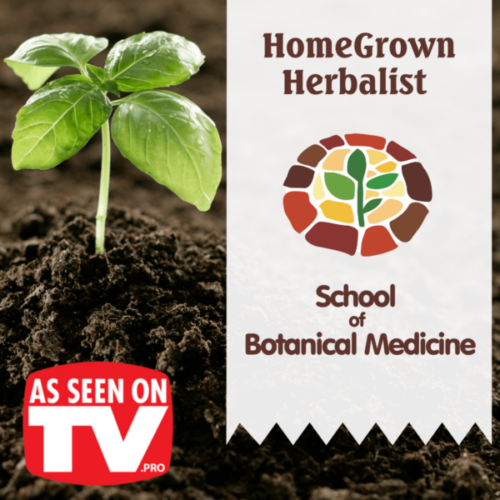
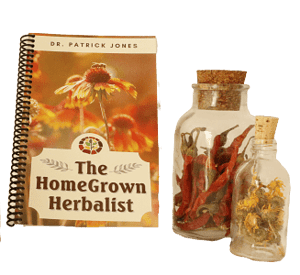

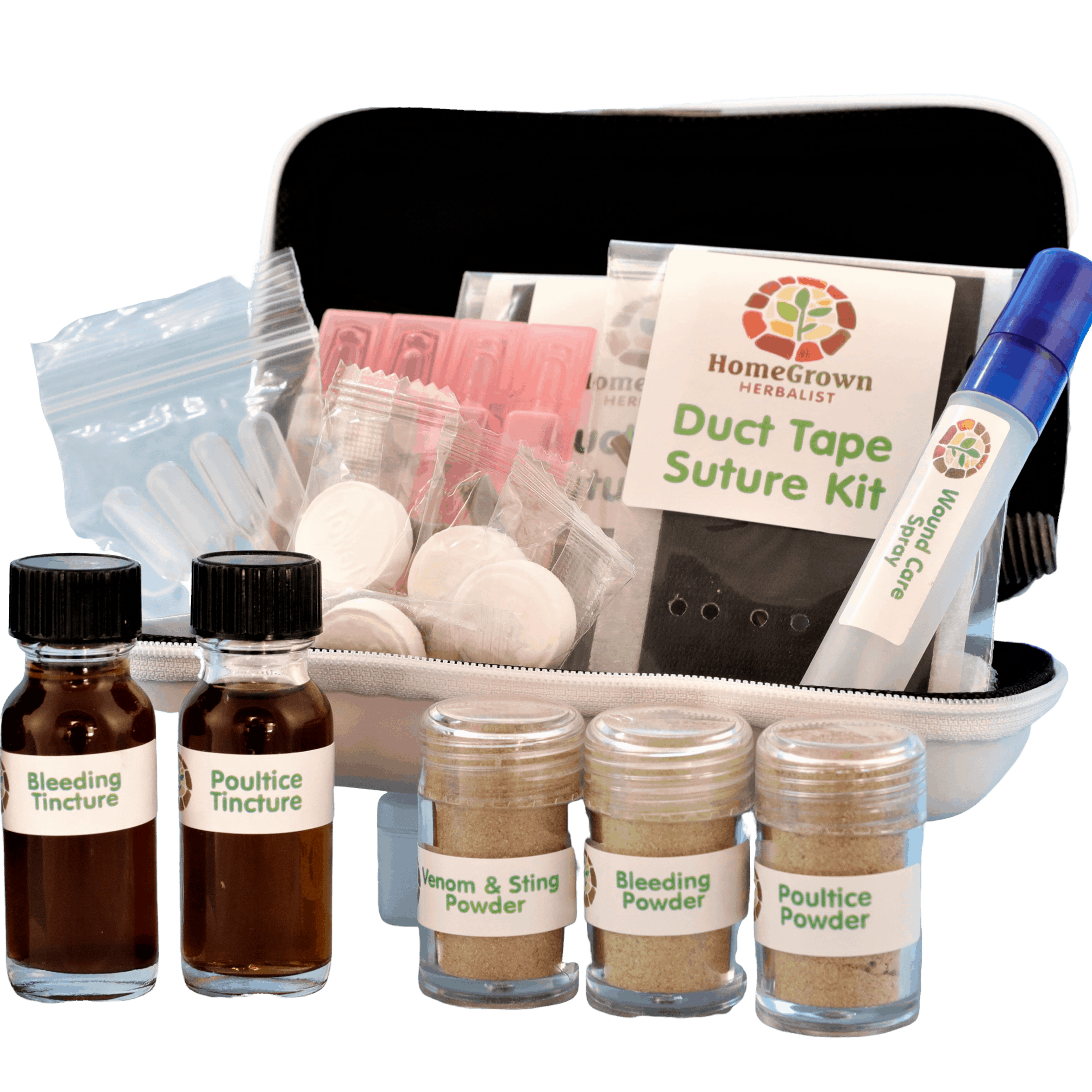
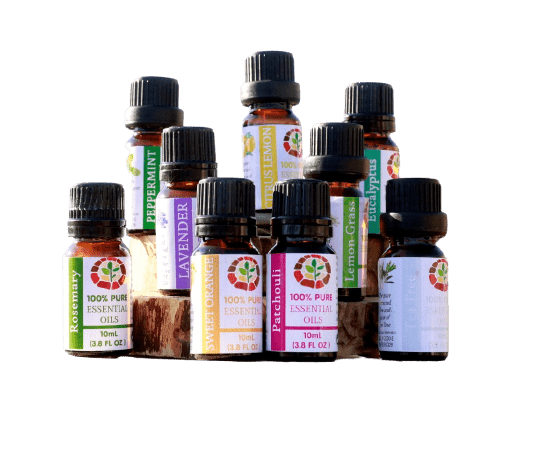
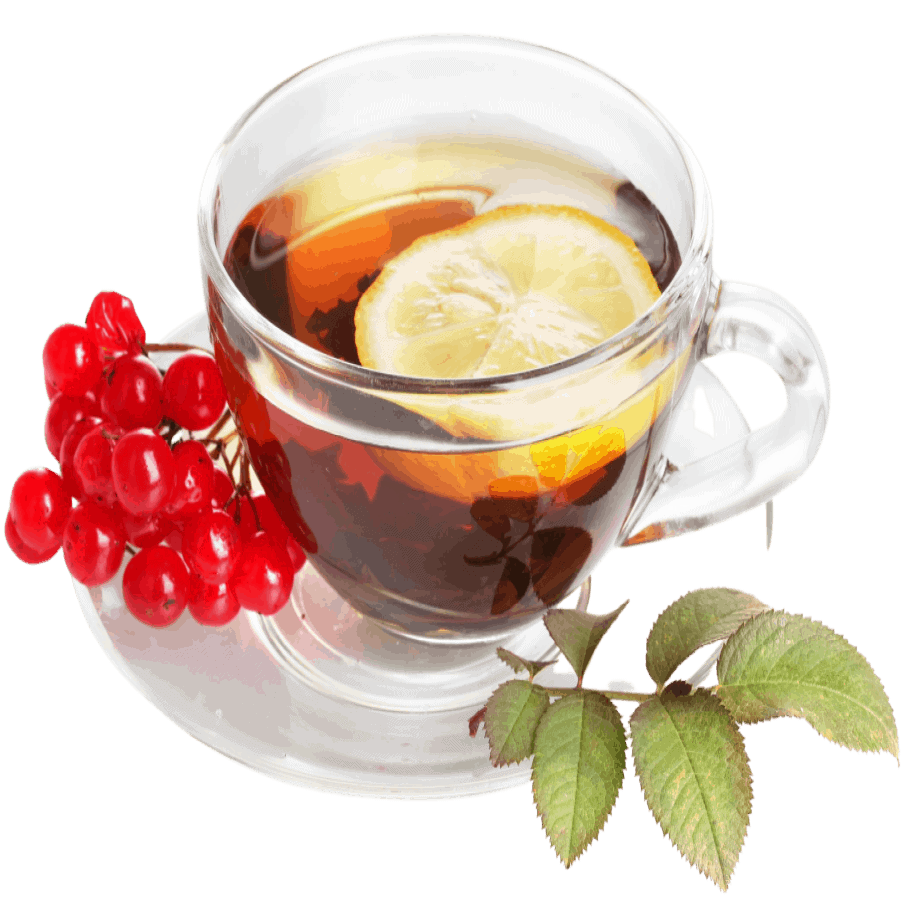
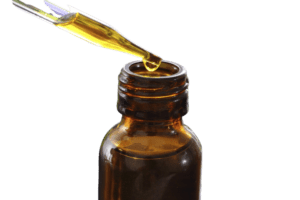
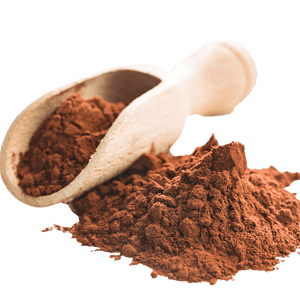
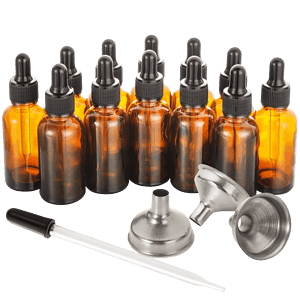
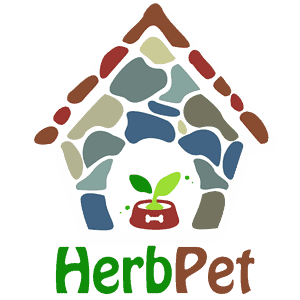
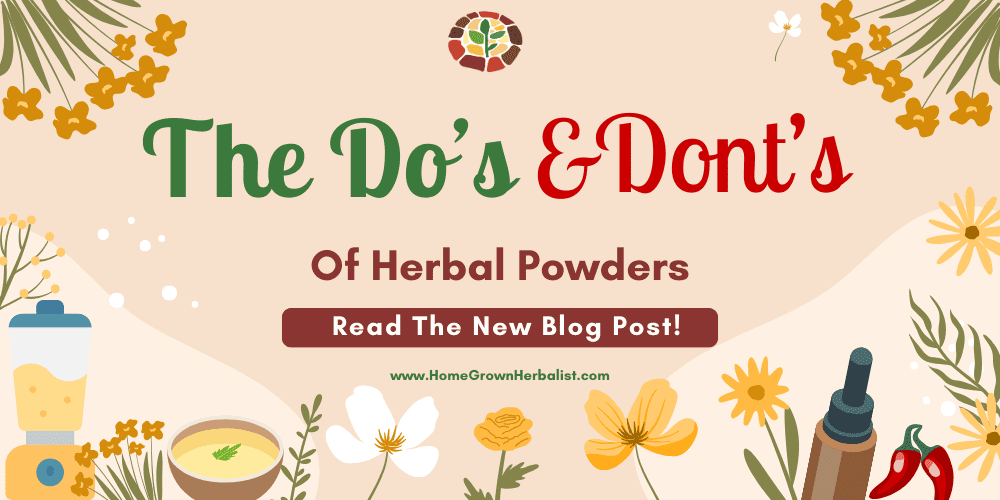
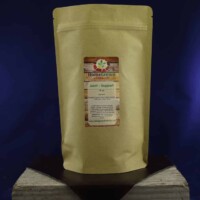

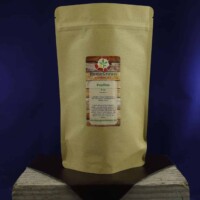
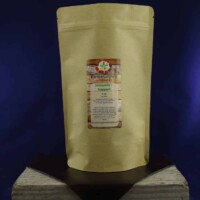
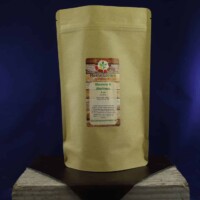

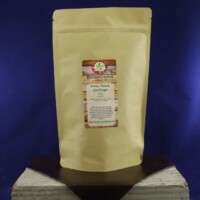

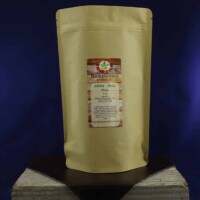
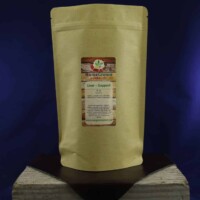
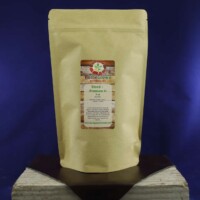
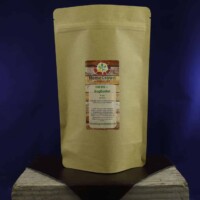
Thanks for the laugh! I like the way you playfully put this information out. This was wonderful clarification on the proper use of herbal powers. Like Doc Jones, I tend to just mix with water and gulp it down. Then I tell my husband not to be a baby about it. lol I’ve given him the immune support in warm water with a little Celtic salt and call it broth.
Hi Dawn!
Ha Ha!!! I bet he only fell for that once!
Fun and very informative, thanks Luci. My husband makes our complicated morning smoothies – very little fruit but lots of herbs and spices (dandelion leaves and flowers, cilantro, holy basil, mints, sweet potato leaves in season, turmeric & ginger) and lots of ‘shrooms and veggies – always with at least 7 dashes of powdered cayenne. Tasty!
Now I don’t feel so bad about not being able to choke down my herbal powders in just water! Some herbs just taste so bad that my stomach and taste buds overrule my willpower. However, as you mentioned, there are definitely creative ways of getting them “down the hatch” without triggering a gag reflux 🙂
Thank you for another informative post! I love the work you guys to at the HGH.
Would love to know about tinctures from the powders: what is the correct ratio of powder to alcohol to create a proper tincture?
I second that! Powder and liquid just sounds messy 🙂
Doc Jones usually says the ratio is 5 herb (by weight) to 1 alcohol (by volume) so 5 oz herbs to 1 oz of Vodka
That’s backward. It’s 1 part dry herb to 5 parts vodka by weight. :0)
I recently got myself a Capsulit and made my first batch of Turmeric and Black Pepper. My husband and I are taking them every day. I’m thinking of freeze drying liver, making powder out of it and putting it into capsules. I’m anemic and don’t want to be eating liver every day.
I don’t really do powders, tinctures are my go to for power and the more bitter the more I enjoy them plain. Never understood why you would want that delicious bitter watered down? The only allowed/ preferred modification is a touch of cayenne added 🙂 I add all sorts of bitter to my home made grapefruit bitter, still tempted to just drink it. If only what the hubby needs would have a better taste….. going to look at your powders anyway, in case I do not have what it takes.
My husband and I are so grateful for the Joint Support formula. I use the powder and he uses the tincture. He takes it straight. I have found a nutrition shake that does a pretty decent job of masking the flavor of the powder.
I mix a teaspoon of nettle and my powdered vitamins with my chocolate protein drink. It is very good. The herbs are not too strong. Good way to get a bone strengthening herb in you as well as your vitamins.
This link ( https://homegrownherbalist.net/product/joint-support-keystone/ ) takes you to the wrong page!
Thanks for catching that!! I’ve fixed the link now:)
Great post and wonderful information. I also, would like to know the ration for tinctures. I have my first powder blend (the Lymphatic – Support Powder) in a tincture now. I did a 1:5 ratio for this. Hoping I did it right.
I enjoyed your lesson on herbal powders, as well as your humor 😀
So far I only powdered a few herbs (for cooking/baking); usually I make teas, tinctures / vinegars or oils with them for medicinal purposes. I also tried to make my own vitamin C pills from bought powders, but never got the right ratio of powders and honey (they turned out either sticky, or hard as a rock), so I gave up on it.
A question—is chaparral powder safe to drink?
Very informative article–thank you. I do have one question that I was hoping to find the answer for in this article. I have purchase plantain powder to use topically on wounds/bites that need it. Would I apply the dry powder to the wound? Or add water first to make a paste? What is the best method?
I have done it that way, but a preferred way is to make a salve. This would mean starting with infusing the herb into like olive oil and later mixing it with some bees’ wax. Recipes would come up for you on-line by simply asking Google. At least this is my preferred way!
Thanks Luci! I mix reishi mushroom & cinnamon powders together in the morning into my golden paste then add some echinacea & elderberry tincture in a juice glass with some 1/2&1/2 – rather tasty but you do have to drink it fast!!!
On the joint support powder, Luci … I am wondering if I just don’t have keen tastebuds anymore (68) or if I’m from a tough generation, but I put a good dose of the joint support (and incidentally, NoMoSpasms also) into my plain yogurt, add some of our Maine maple syrup and I even sort of like the flavor!
I never thought of maple syrup in yogurt, thanks
Reading these comments it is fun to see the tough vs the sensitive. Interesting to think that all folks experience the sensory world from a different perspective.
Luci, you have a warm and talented writing voice, and I look forward to witnessing your growth as a teacher. Your Dad must be proud!
I agree.
My lymphatic support tincture from the powder I bought is finally ready. However, I’m a wimp for the heat. I can handle the taste but it sets my lips and mouth on fire. Is there a way to tone down the heat that will not diminish the dose or effectiveness?
It has cayenne in it which can be a bit zingy. Any tincture taken straight is pretty unpleasant in my opinion. I always put them in a little juice or water.
Luci, your sense of humor is right out of your dad! LOVED the read. I can’t tell you the difference this school, education, blogs by the Doc, help from the staff, classes in person and on line have made in my life and in the lives of those I have been trying to help with this knowledge. It is nothing short of MIRACULOUS what the Lord has provided for us in our own backyard. Thanks to your family for sharing the knowledge so openly.
I love tinctures! I add all the ones I’m taking at any given time and put them in a shot glass. Obviously, it only comes up to a max of a third of a shot glass. Then I shoot them down and chase it with a little bit of juice. Barely any bad taste no matter how yucky a tincture flavor would normally be.
I like the idea of making super healthy soups! Which herbs are your favorite to add to the stews and which ones have you found don’t hide well?
If you have a super soup recipe you would like to share that would be great!